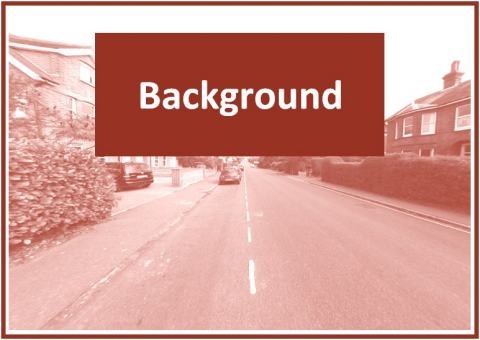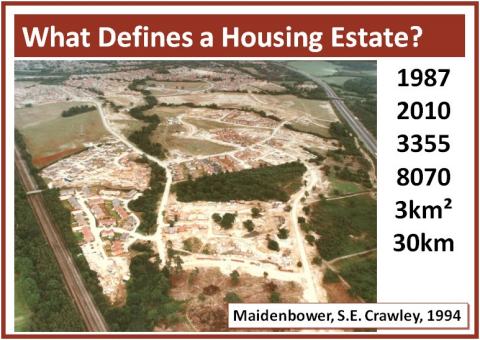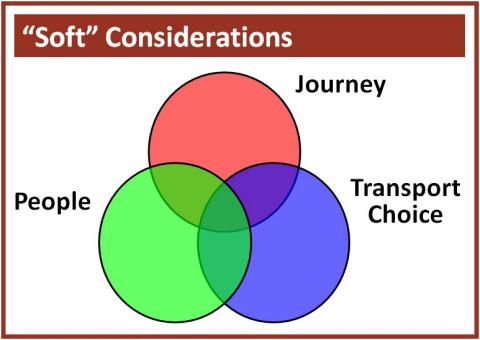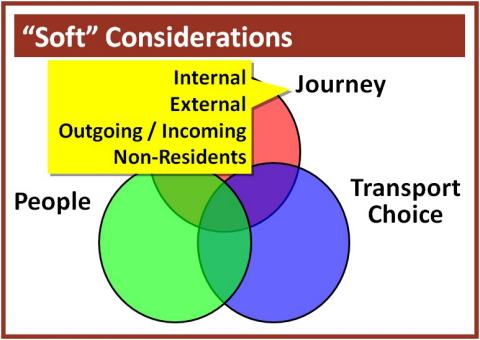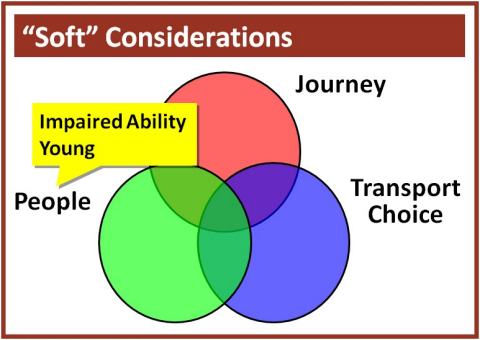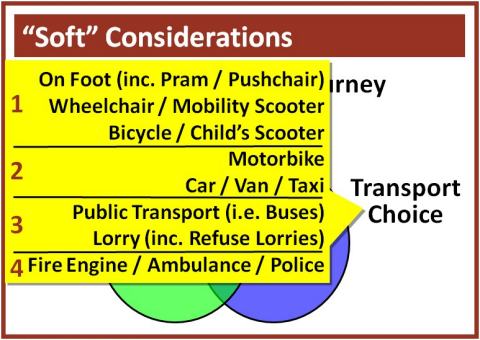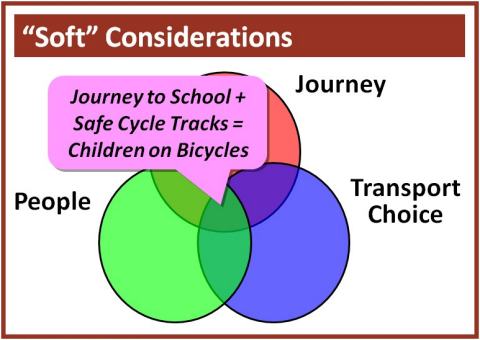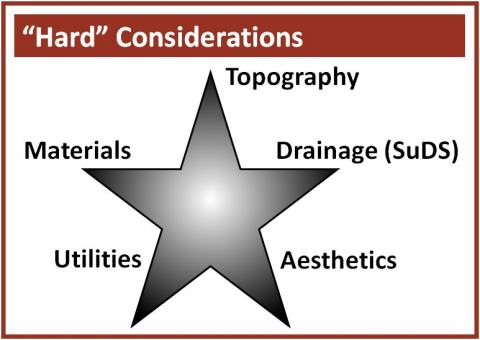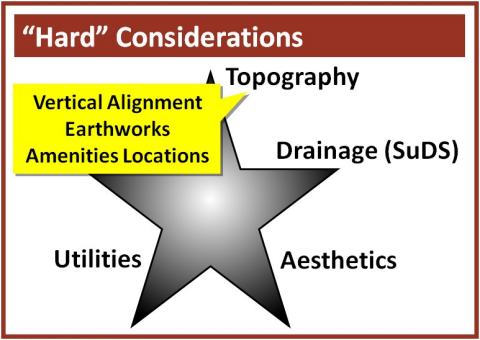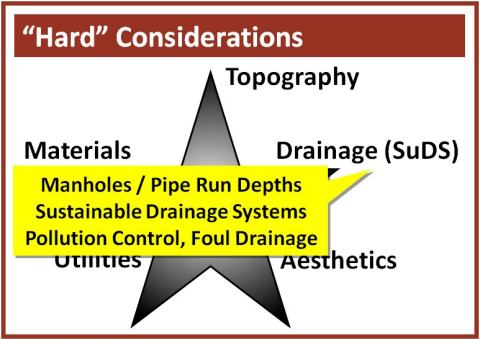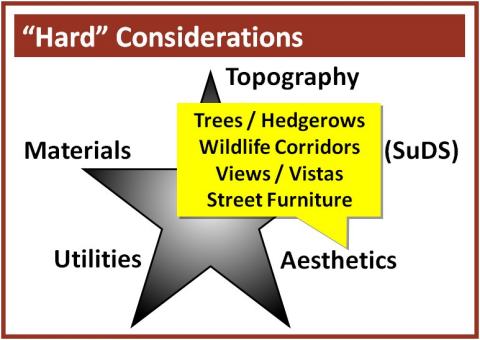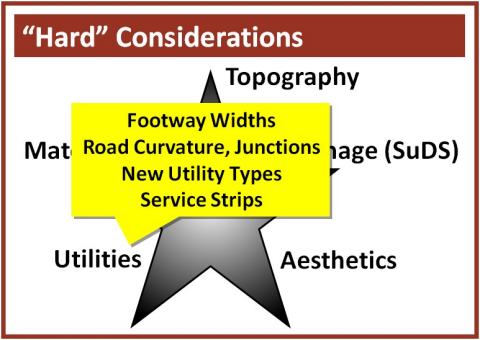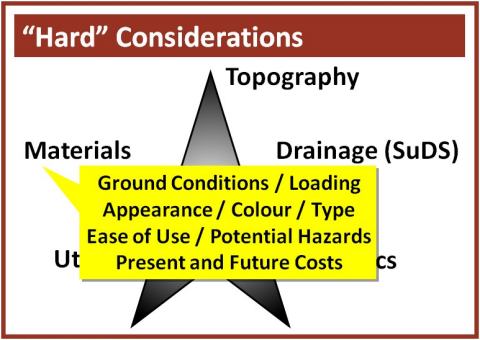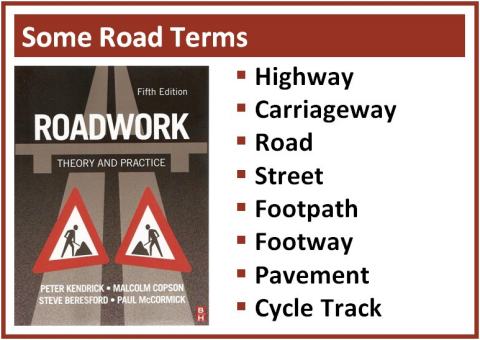 |
There are a number of terms that can seem interchangeable, when strictly speaking they’re not. Based on the book "Roadwork Theory and Practice" I use the following definitions in this presentation:
A highway is a route along which the general public have the right to travel
A carriageway is the bit in the middle used by cyclists and motor vehicles
A road is a route comprising of a carriageway with or without footways, verges and cycle tracks along one or both sides
A street is a road in an urban or built-up area
A footpath is a route for pedestrians only which does not run alongside a carriageway – for example it can cross fields
A footway is a route for pedestrians only which does run alongside a carriageway
The pavement is not just the bit along the road edge used by pedestrians, but it refers to the structure of any hard or paved surface, including the carriageway and cycle tracks
A cycle track is a route for cyclists. It can be alongside a carriageway, or independent of a carriageway, and it can be shared with pedestrians or segregated from pedestrians
A cycle track is not the same as a cycle lane which is usually part of the carriageway, set out with road markings or a different coloured surface |


